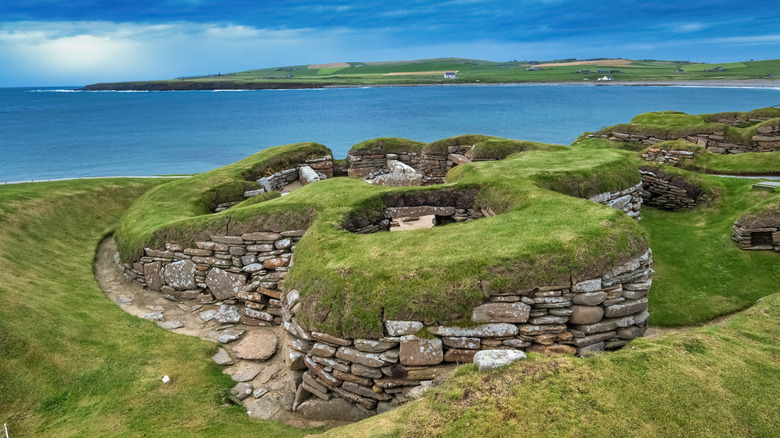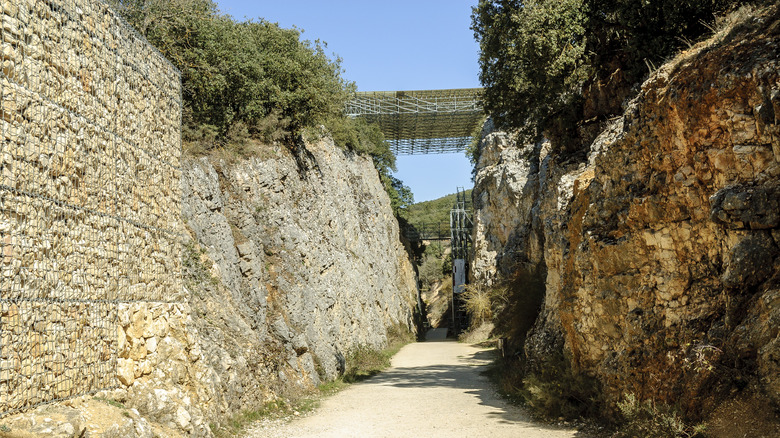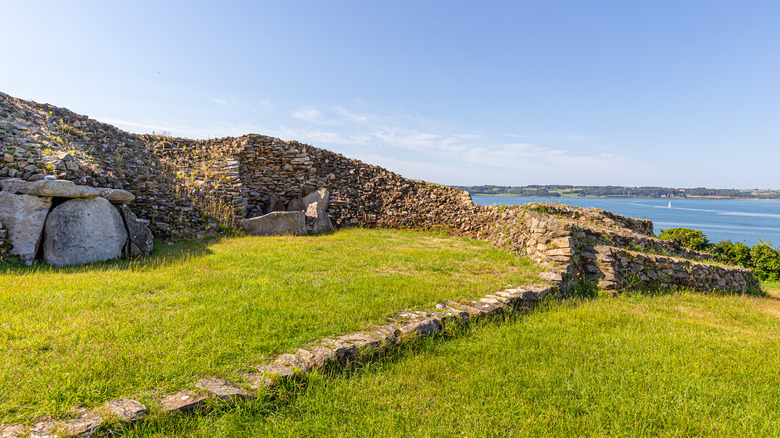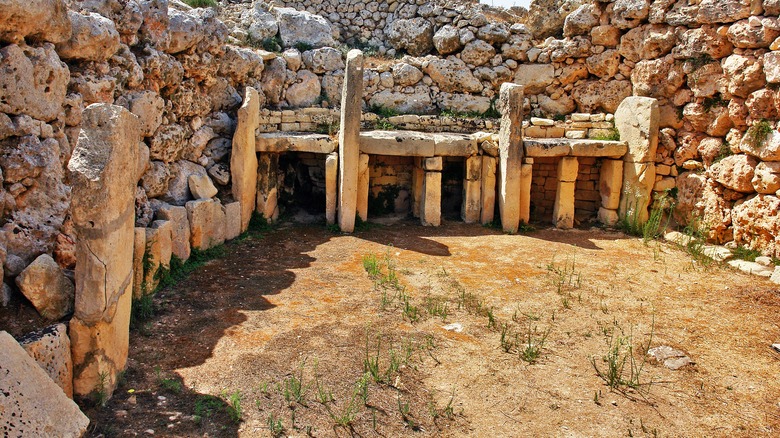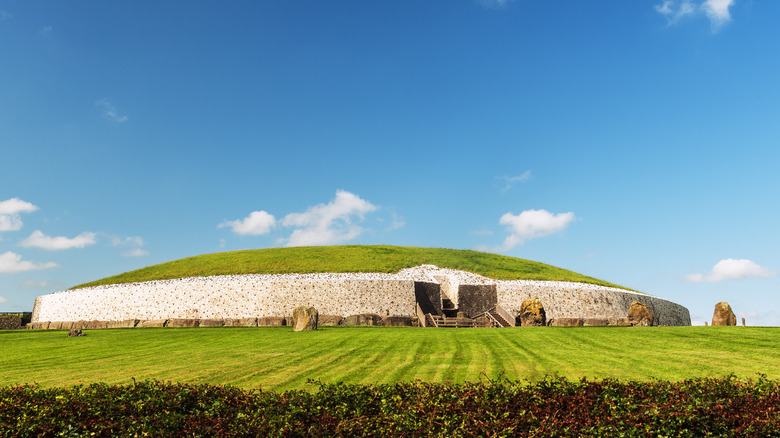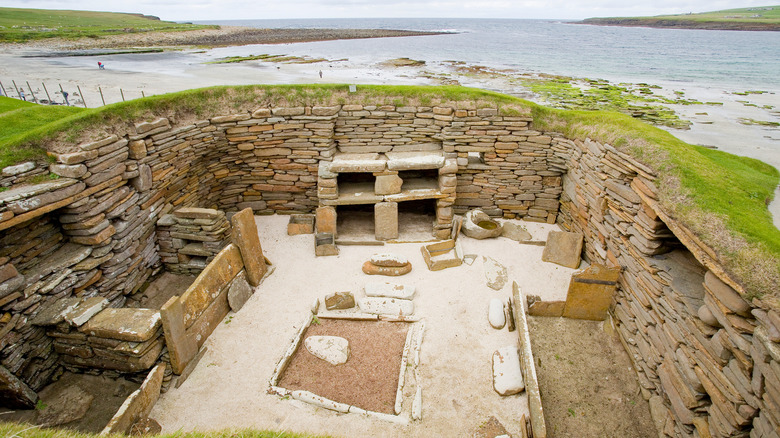The Oldest Archeological Sites In Europe Are Absolute Must-Sees
Europe is a dream come true for history buffs. The continent is known for having a vibrant human history full of language, art, and architecture, much of which has remained intact for thousands of years. Each year, archaeologists uncover exciting discoveries offering insight into the lives of humankind's ancestors. Recent discoveries indicate that early human beings may have lived in Europe as early as 54,000 years ago, which could have meant they lived at the same time as Neanderthals.
Over the thousands of years that followed human beings' arrival in Europe, they developed fascinating civilizations. The remnants of prehistoric European culture can be experienced at some of the country's remarkably well-preserved archeological sites, allowing travelers to venture back in time and imagine what life might have been like for some of our earliest ancestors. As you plan your European adventures, consider carving out some time to explore these ancient sites. You can enter prehistoric temples, admire some of the world's oldest cave art, and even peek into early dwellings where ancient people worked and lived.
The caves of the Sierra de Atapuerca
The Sierra de Atapuerca caves are located in Northern Spain near the city of Burgos, one of Spain's underrated destinations. The fascinating archaeological sites were discovered back in the 19th century, and the first digs began in 1978. One of the caves, Sima de los Huesos, which translates to "Pit of the Bones" in English, has contained over a thousand human bones. The oldest bones discovered are believed to be between 300,000 and 600,0000 years old, so this site uncovered the oldest human remains in Europe.
Archaeological research is still being performed, and conservation of the site is of utmost priority, so you must book a visit with a guide through the Museum of Human Evolution. Guides will transport you to the site, where they will discuss the current digs as well as the history of the site. The archaeological park contains re-creations from digs that will teach you about the Paleolithic, Neolithic, and Metal Ages. For the ultimate experience, consider booking the combination pass, which gives you access to the museum, sites, and the archaeological park. Pre-booking ahead of time is required, and you will need to make your reservation by calling the museum directly.
The Cairn of Barnenez
The Cairn of Barnenez is one of the most significant megalithic structures in Europe. Located in the northwestern region of France, it was constructed almost 7,000 years ago in the Neolithic Period, making it one of the oldest structures in the world. To put it into perspective, the monument is about 2,000 years older than the Great Pyramids of Giza in Egypt.
Perched atop a hill overlooking the sea, the Cairn of Barnenez is 236 feet long and 82 feet wide, containing an incredible 13,000 to 14,000 tons of stones. The structure was essentially a massive mausoleum and contained 11 different burial chambers. During excavations, archaeologists uncovered artifacts like pottery fragments, arrowheads, and axes. There are also carvings along the walls.
During your visit, you can explore the grounds with breathtaking views. Hours of operation vary slightly throughout the year, but generally, the site opens at 10 a.m. daily. The entrance fee is about $8 per adult, and anyone under 18 can visit for free.
Megalithic Temples of Malta
Malta, an underrated Mediterranean island, is located off the coast of Italy and Northern Africa and is home to massive stone temples. Some of the oldest free-standing structures known to man were constructed from enormous stone and are believed to be around 5,500 years old. Across the islands of Malta and Gozo, seven megalithic temples are classified as UNESCO World Heritage Sites. The oldest are the Ggantija Temples on Gozo, built between 3600 and 2500 B.C.
Many of the large structures were believed to serve as ancient temples related to fertility, and you'll be able to see stone sculptures and designs carved into the limestone slabs. Local legends and folklore tell stories of the buildings being crafted by giants, which makes sense when you look at the massive doorways. Moving each stone would have been a significant undertaking for early humans.
Many of the structures are open to the public, and you can actually walk around inside the spacious structures and imagine what life might have been like thousands of years ago. You can visit the temples individually by bus or car, or sign up for a tour that takes you to the best sites for around $50 per person.
The prehistoric monument of Newgrange
Newgrange is a massive monument built in the Stone Age that dates back around 5,200 years and is part of a series of structures and monuments known as Brú na Bóinne. It's in a rich archeological region in the Boyne Valley of County Meath, Ireland. Initially, archeologists believed that the massive mount was a passage tomb, as it contained burial chambers, but it is now considered a broader sacred site used for ceremony and worship. It is constructed in such a way that on the winter solstice, the passageway becomes illuminated by the alignment of the Sun through an opening.
Newgrange covers about an acre of land and contains some of Europe's most outstanding examples of Megalithic art. There are 75 stones carved with sacred symbols like spirals and zig zags, some are specially illuminated during the solstice. You can visit Newgrange by taking a guided tour offered through the Brú na Bóinne Visitor Center. You'll need to make your booking online ahead of time, which can be made up to 30 days in advance. Make sure to get your tickets as soon as possible, as it is a popular spot and tends to book up.
The Neolithic settlement of Skara Brae
You'll find one of Europe's most breathtaking Neolithic archaeological sites on the Orkney Islands in Scotland — one of the most beautiful countries in the world. Skara Brae is a Stone Age village dating back 5,000 years. Perched on green cliffs overlooking the ocean, the area contains 10 structures. A popular theory suggests the community was buried by a massive sandstorm, causing the people to abandon their homes. The remnants of the thriving community were first discovered in 1850 when a strong storm unearthed some of the buried remains.
The dwellings provide a glimpse into early European life. Each unit contains a large single room with a central hearth. You can even see furniture built from stone, including beds, seating, and cupboards within each home. Artifacts discovered at the site include beads from jewelry, gaming dice, tools, pottery, and some ornately carved objects that may have been used for rituals and religious ceremonies.
One of the most intriguing things about the artifacts at Skara Brae is that no weapons were discovered anywhere, indicating that the people who lived here were peaceful in nature. Some of the artifacts that were unearthed during excavation are on display in the Skara Brae Visitor Centre. Admission to Skara Brae costs around $12, and booking online is recommended. Between April and September, you can visit between 9:30 a.m. and 5:30 p.m. From October through March, the site is open from 10 a.m. until 4 p.m.
